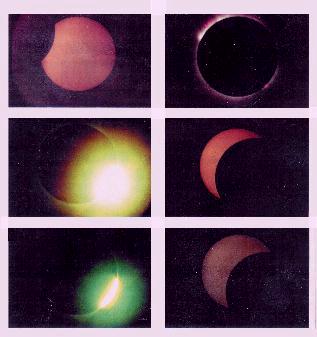It turns out that the scope had a longer focal length than either of us suspected at the time of the sale. That longer focal length was a factor in the decision process of which telescopes to take to Mexico. Be as it may, I feel as though I had an ambassador in Mexico (the telescope) during the eclipse.
Months later, when John was back in town, we bumped into one another when he was running copies of this photographic montage. Five dollars got me one, and that eventually led to this web page. By the time I put the web page together I had forgotten (could not recall) John's name. I put a note on the page, saying that if the photographer ever happened to see the page, to please contact me.
06 Jul 2005 - John (now Dr.) Guyton, of Ocean Springs, MS, visited the page today and filled in the fuzzy spot in my memory.
19 Oct 2013 - Dr Guyton is an Associate Extension Professor (Entomology) in the Biochemestry, Molecular Biology, Entomology & Plant Pathology Department at Mississippi State University.

Note what looks like a green flash in the lower left
image. There's also a hint of green in the middle
left image.
If that was really a green flash, then the moon, at least
occasionally, has enough atmosphere to produce
appreciable light bending. (Added 22 Jul 2010)
Another possibility for the green in these images would be coronal Fe XIV 530.3 nm. I was unaware of a solar coronal green phenomenon until 25 Aug 2019 when I read the following sentence on page 206 of the book Enola Gay by Gordon Thomas and Max Morgan Witts (1977). Re: Fat Boy test, Alamagordo, NM: "For a fleeting instant the color was an unearthly green such as one only sees in the corona of the sun during a total eclipse." (Added 26 Aug 2019.)